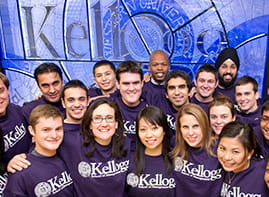9/9/2014 - In 2012, some 640,000 Kentuckians were uninsured. In 2013, more than 413,000 residents of the Bluegrass State enrolled for health care coverage via
kynect, Kentucky’s health benefit exchange. An impressive result, especially for a state ranked among the worst in the nation for health outcomes.
“We did such a great job that residents didn’t even see the exchange as part of the Affordable Care Act but just as kynect,” said kynect Executive Director Carrie Banahan.
Banahan was the keynote speaker at
a Sept. 4 conference cohosted by Kellogg and
Get Covered Illinois, Illinois’ health insurance marketplace, whose executive director, Jennifer Koehler, kicked off the event. The symposium featured the executive directors of seven state-based exchanges along with top leadership from two additional exchanges.
Participants, including several Illinois state senators and representatives, discussed the opportunities and challenges of setting up state-based exchanges. All states must have an exchange, but only 17 (including Washington, D.C.) operate theirs independently from the federal government. Symposium co-organizer
Professor Leemore Dafny lauded the exchange leaders working in the health care space as “true public servants.”
Here are five key takeaways:
1. Identify strong champions and leaders
From the very beginning, support for the Affordable Care Act, termed “Obamacare” by its foes, fell along party lines. Banahan attributes the success of a Democrat-spearheaded program in heavily Republican Kentucky to the advocacy of Gov. Steve Beshear, along with business, employer and carrier partnerships.
The governance of exchanges involves competing interests among myriad decision makers. Scott Leitz of
MNsure, Minnesota’s state-based marketplace, stressed the importance of a “single wringable neck” to be held accountable when things go wrong.
2. Let the why inform the how
As many symposium speakers reminded the audience, “exchanges are more than a website.”
Technology builds remain a critical component of online marketplaces, but Christine Ferguson of Rhode Island’s
HealthSource RI cautioned attendees not to forget the ACA’s core mission: to improve quality and “bend the cost” curve of health care. She said exchanges should strive to provide transparency about insurance pricing in order to drive consumer competition and ultimately lower costs.
3. Combine programs to manage “churn”
Melding Medicaid and private insurance enrollment efforts worked well for a number of state-based exchanges. Several states implemented an “integrated eligibility engine” which enabled them to seamlessly direct enrollees to Medicaid options or to private-sector plans (with income-based subsidies), as appropriate. This integration also should help to ensure coverage continuity as people cycle in and out of Medicaid eligibility owing to changes in income and family status.
Maryland Health Connection Executive Director Carolyn Quattrocki WCAS ’81 believes more “attention to the churn” between the two programs will be needed moving forward.
4. Go where the customers are
Distributing information and answering questions at dance clubs, bars, Nike stores and all-night Denny’s restaurants helped the
Health Benefit Exchange Authority in Washington, D.C., build a young and desirable insurance risk pool. Due in part to these creative efforts, 39 percent of individuals who signed up for private coverage in the District of Columbia’s exchange last year ranged from ages 26 to 34, according to Executive Director Mila Kofman.
5. Plan for high touch
Customer service demands took some exchanges by surprise in the first round. Inadequate staffing and phone lines had some marketplaces scrambling to handle unexpectedly high volume.
“We didn’t anticipate the number of ‘touches’ people would need,” said Richard Onizuka of the
Washington Health Benefit Exchange in Washington state. “We thought a quarter of people would need assistance but it turned out to be more like half.”
More of Kellogg's health care thought leadership:






